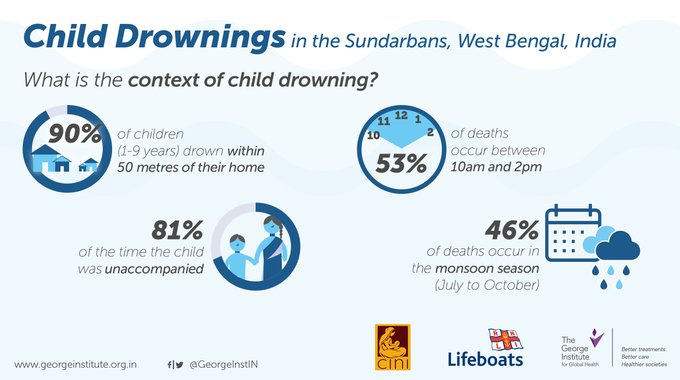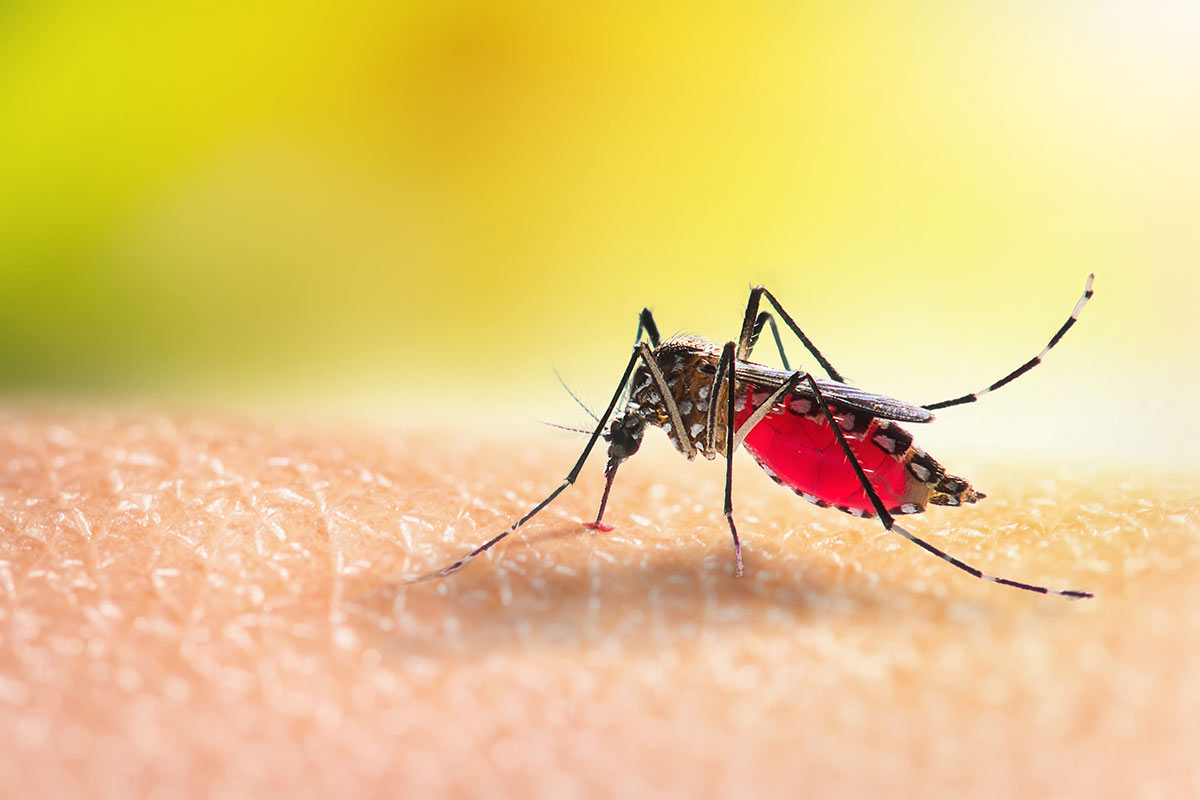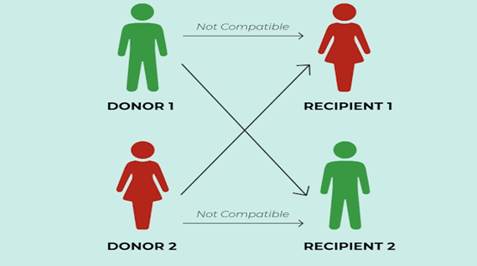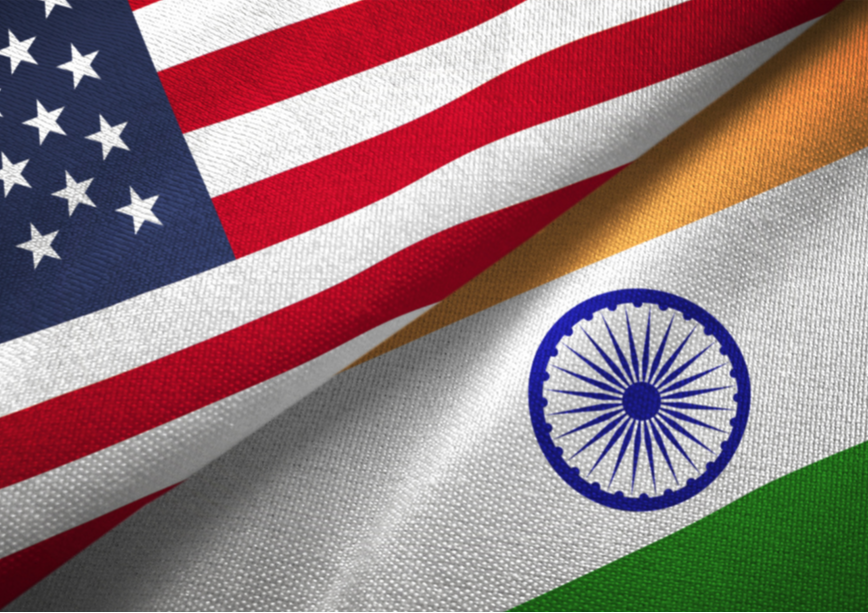Drowning biggest killer of children in Indian Sundarbans: Report

NEW DELHI: A new community-based survey conducted by the George Institute in collaboration with the Child in Need Institute (CINI) highlights that there are nearly 3 drowning deaths among children between 1 and 9 years of age every day in the Sundarbans. Interventions keeping children in safe spaces away from water are urgently required if we are to protect our children from these avoidable deaths.
The survey was conducted in the Sundarbans region of West Bengal to determine the drowning mortality rate for children aged 1 to 4 years and 5 to 9 years. The results which have now been published in the BMJ Injury Prevention Journal reveal that drowning mortality rate for children aged 1 to 4 years in the region was 243.8 per 100,000 children and for 5 to 9 years, it was 38.8 per 100 000 children. 58.0% of deaths were among children aged 1 to 2 years.
The paper titled “Determining Child Mortality in the Sundarbans India: Applying the Community knowledge approach” authored by Medhavi Gupta, Soumyadeep Bhaumik, Margaret Peden and Jagnoor Jagnoor of the George Institute and Sujoy Roy of the Child in Need Institute and Ranjan Panda also reveals that there was no difference in drowning rates between boys and girls.
Most of the children drowned in ponds within 50 metres of their homes. Children were usually unaccompanied with their primary caretaker engaged in household work. A minority of children were treated by formal health providers.
The Royal National Lifeboat Institution (RNLI), which supported the research, warmly welcomed the publication of the findings on the high burden of drowning in the Sundarbans.
Head of International Advocacy at the RNLI, Kate Eardley said “This ground-breaking research underlines the urgent need to address the high drowning risks that young children in the Sundarbans face everyday. The impact of drowning is still largely unrecognised by governments and donors worldwide, so providing a local picture of the scale of the problem is an important step towards securing greater action for the families and communities that are affected.”
The unique approach is significant in the light of the fact that each year, more than 320?000 people are estimated to die from drowning worldwide. The young, poor, and marginalised are among the worst affected. “Most of the world's drowning deaths occur in children, making drowning one of the leading causes of injury death for children and young people. Globally, drowning occurs most often in children between 1 and 4 years of age,” says Jagnoor Jagnoor, Head of the Injury Division at the George Institute India and senior author of the paper.
“Drowning is often referred to as a silent killer. It lacks the voice on global platforms of health and development and that is silencing evolving child health needs. Drowning deaths are appalling not just for the scale of suffering they represent, but also because they are, arguably, entirely preventable,” she adds.
The Sundarbans region in India is a rural, forested region where children are exposed to a high risk of drowning due to its waterlogged geography. Current data collection systems capture few drowning deaths in this region. “The results illustrate how routine data collection systems grossly underestimate drowning deaths and how community-based surveys can help capture these deaths in rural low- and middle-income country contexts. The community knowledge approach provides a low-resource, validated methodology for this purpose,” says Sujoy Roy of CINI, another co-author.
Of the 320,000 people who fatally drowned globally in 2016, more than 50 per cent were children aged under 15 years, according to the most recent WHO figures. More than 90 per cent of fatal drownings occur in low- to middle-income countries. India contributes to 19% of the global drowning burden with estimated 60000 deaths ever year.











